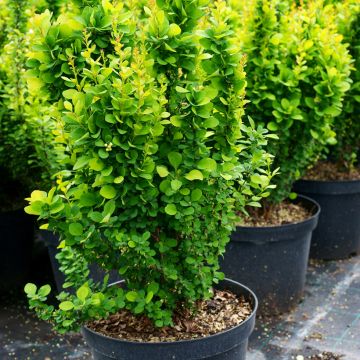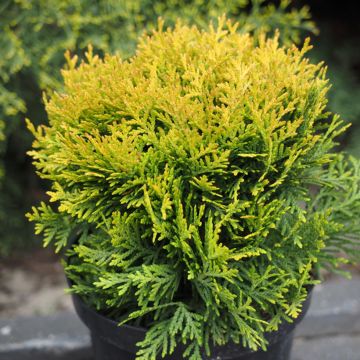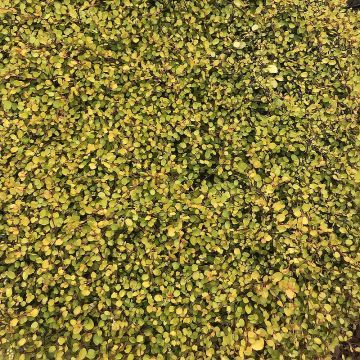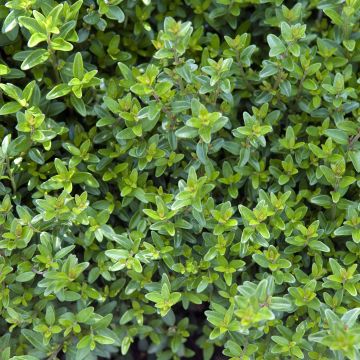

Berberis lologensis Apricot Queen - Barberry
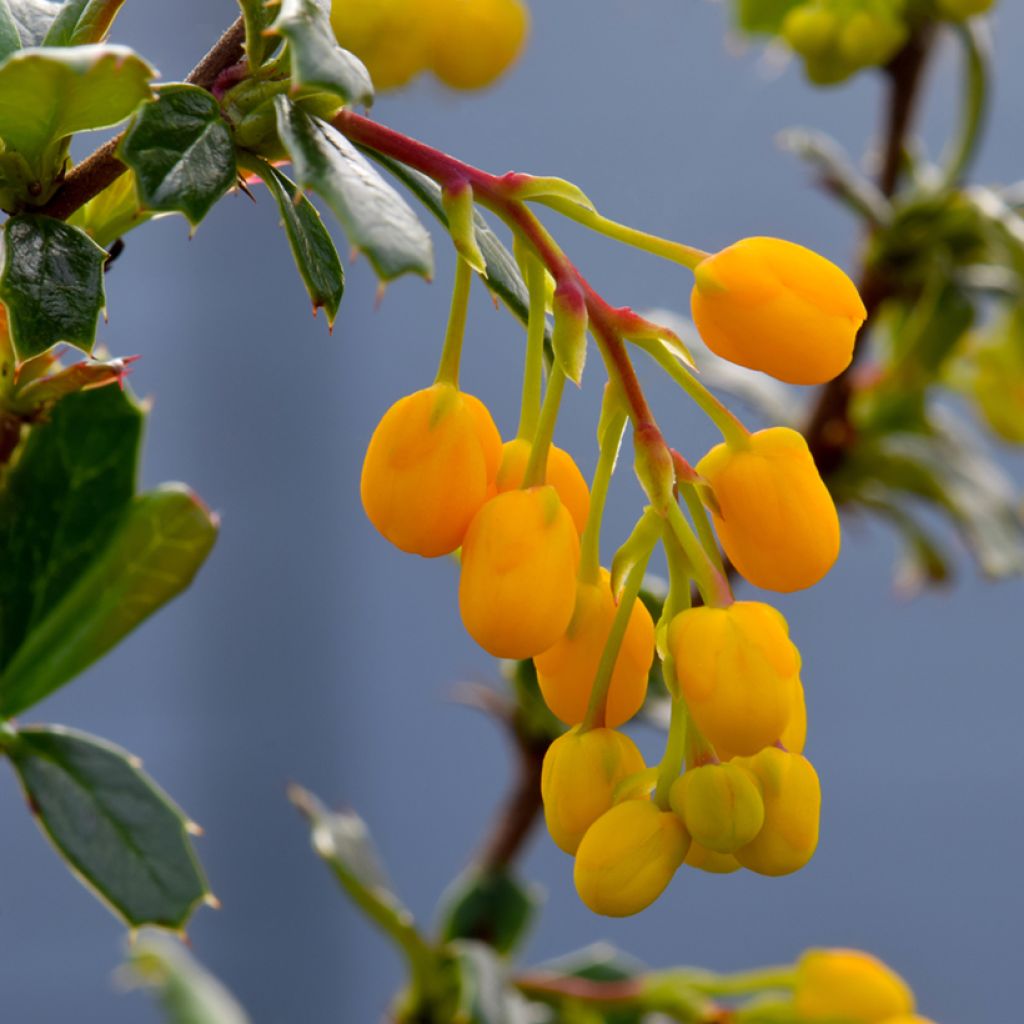

Berberis lologensis Apricot Queen - Barberry


Berberis lologensis Apricot Queen - Barberry


Berberis lologensis Apricot Queen - Barberry
Berberis lologensis Apricot Queen - Barberry
Berberis lologensis Apricot Queen
Barberry
Very decorative and highly resistant young plant, with a very easy habit and excellent pruning tolerance.
Louis, 17/10/2021
This item cannot be shipped to the selected country
Delivery charge from €5.90
More information
Schedule delivery date,
and select date in basket
This plant carries a 24 months recovery warranty
More information
We guarantee the quality of our plants for a full growing cycle, and will replace at our expense any plant that fails to recover under normal climatic and planting conditions.
From €5.90 for pickup delivery and €6.90 for home delivery
Express home delivery from €8.90.


Does this plant fit my garden?
Set up your Plantfit profile →
Description
Berberis x lologensis Orange Queen is a variety of evergreen Barberry, selected for its beautiful bright and clear orange flowers which are spectacular in spring and sporadically bloom in summer. Enhanced by small leaves of dark and shiny green, it has dark red, glossy berries that remain decorative for a long time. This thorny and vigorous bush, reaching 3m (9 ft 10in) in all directions, has few requirements and requires very little maintenance. It will easily integrate into a vibrant hedge or a flowering shrub bed.
Berberis lologensis Orange Queen is a hybrid and horticultural shrub from the Berberidaceae family. Its ancestors are Berberis linearifolia and Berberis darwinii, both native to South America, specifically the Chilean Andes and Argentina. Hardy in zone 6, it is very tolerant of nature and soil pH.
'Orange Queen' closely resembles Berberis Orange King, but it has slightly larger growth, allowing it to reach about 3m (9ft 10in) in all directions, and a flowering of a lighter orange, equally spectacular. It is a variety with evergreen foliage characterized by a bushy, dense, upright, and slightly wayward habit due to branches that arch over time. Its growth is rather fast. The bark of this shrub is light grey to brown, equipped with thorns, taking on a fibrous appearance with age. In April-May, countless flowers bloom, grouped in small umbels of 2 to 4 flowers, almost double, and large for a barberry. Each bell-shaped flower, with a small corolla at the base, has up to 21 dark orange petals turning light orange and apricot as they open. This barberry often produces more flowers during the summer if the soil remains moist. This nectar-rich flowering is followed by small, fleshy, ovoid fruits that become dark red and glossy when ripe. The persistent foliage is composed of small, shiny, dark green, narrow, leathery leaves with coarsely toothed edges, ending in a spine.
The Orange Queen Barberry can be planted in flower beds, in groups of 3, as a defensive hedge or as an informal hedge. Very adaptable, it tolerates all soils that are not too dry, but prefers sunny exposures. Its beautiful, sparkling, orange flowering and beautiful foliage and red fruits make it an interesting shrub all year round. There are many reasons to reserve a spot for it in front of taller shrubs with blue flowers, such as ceanothus. Its flowers and berries will also go well with the superb purple foliage of Berberis thunbergii Atropurpurea, for example, or, in mild climates, with that of Acacia baileyana 'Purpurea', a surprising mimosa with feathery purple and silver foliage. This shrub can also be planted in large rockeries, to cover slopes or highlight the edge of a path.
Report an error about the product description
Berberis lologensis Apricot Queen - Barberry in pictures


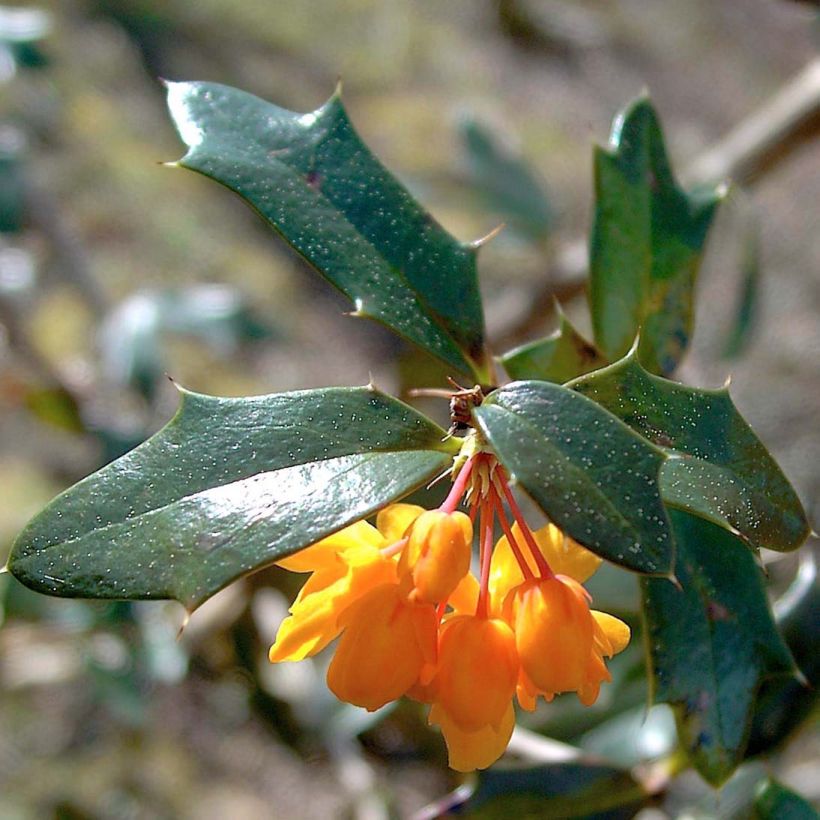

Plant habit
Flowering
Foliage
Botanical data
Berberis
lologensis
Apricot Queen
Berberidaceae
Barberry
Cultivar or hybrid
Other Berberis - Barberries
Planting and care
Berberis Orange Queen adapts to any fairly deep, even clay, soil which can be acidic, neutral or limestone. It dislikes waterlogged or excessively dry soils, naturally prefering soft and moist soils. Once established, it tolerates summer drought quite well and can do without watering in summer in most regions. Its hardiness is around -20°C (-4°F), after 2 or 3 years, but protect young plants during the first winters with fleece in case of severe frost. It prefers sunny to semi-shaded exposures. While it tolerates shade, it will flower less. The planting hole should be twice the size of the root ball. Space the Berberis about 1m (3ft 4in) apart. Add compost and water well. It is a bush that does not require pruning but can tolerate a light prune after flowering. It can occasionally be pruned in March to prevent it from becoming bare in the centre. This will compromise flowering, but will encourage the bush to produce young, vigorous branches that will flower the following spring. Be careful not to touch the branches with bare hands as they have thorns that are difficult to remove once they have entered the skin.
Planting period
Intended location
Care
-
, onOrder confirmed
Reply from on Promesse de fleurs
Evergreen shrubs
Haven't found what you were looking for?
Hardiness is the lowest winter temperature a plant can endure without suffering serious damage or even dying. However, hardiness is affected by location (a sheltered area, such as a patio), protection (winter cover) and soil type (hardiness is improved by well-drained soil).

Photo Sharing Terms & Conditions
In order to encourage gardeners to interact and share their experiences, Promesse de fleurs offers various media enabling content to be uploaded onto its Site - in particular via the ‘Photo sharing’ module.
The User agrees to refrain from:
- Posting any content that is illegal, prejudicial, insulting, racist, inciteful to hatred, revisionist, contrary to public decency, that infringes on privacy or on the privacy rights of third parties, in particular the publicity rights of persons and goods, intellectual property rights, or the right to privacy.
- Submitting content on behalf of a third party;
- Impersonate the identity of a third party and/or publish any personal information about a third party;
In general, the User undertakes to refrain from any unethical behaviour.
All Content (in particular text, comments, files, images, photos, videos, creative works, etc.), which may be subject to property or intellectual property rights, image or other private rights, shall remain the property of the User, subject to the limited rights granted by the terms of the licence granted by Promesse de fleurs as stated below. Users are at liberty to publish or not to publish such Content on the Site, notably via the ‘Photo Sharing’ facility, and accept that this Content shall be made public and freely accessible, notably on the Internet.
Users further acknowledge, undertake to have ,and guarantee that they hold all necessary rights and permissions to publish such material on the Site, in particular with regard to the legislation in force pertaining to any privacy, property, intellectual property, image, or contractual rights, or rights of any other nature. By publishing such Content on the Site, Users acknowledge accepting full liability as publishers of the Content within the meaning of the law, and grant Promesse de fleurs, free of charge, an inclusive, worldwide licence for the said Content for the entire duration of its publication, including all reproduction, representation, up/downloading, displaying, performing, transmission, and storage rights.
Users also grant permission for their name to be linked to the Content and accept that this link may not always be made available.
By engaging in posting material, Users consent to their Content becoming automatically accessible on the Internet, in particular on other sites and/or blogs and/or web pages of the Promesse de fleurs site, including in particular social pages and the Promesse de fleurs catalogue.
Users may secure the removal of entrusted content free of charge by issuing a simple request via our contact form.
The flowering period indicated on our website applies to countries and regions located in USDA zone 8 (France, the United Kingdom, Ireland, the Netherlands, etc.)
It will vary according to where you live:
- In zones 9 to 10 (Italy, Spain, Greece, etc.), flowering will occur about 2 to 4 weeks earlier.
- In zones 6 to 7 (Germany, Poland, Slovenia, and lower mountainous regions), flowering will be delayed by 2 to 3 weeks.
- In zone 5 (Central Europe, Scandinavia), blooming will be delayed by 3 to 5 weeks.
In temperate climates, pruning of spring-flowering shrubs (forsythia, spireas, etc.) should be done just after flowering.
Pruning of summer-flowering shrubs (Indian Lilac, Perovskia, etc.) can be done in winter or spring.
In cold regions as well as with frost-sensitive plants, avoid pruning too early when severe frosts may still occur.
The planting period indicated on our website applies to countries and regions located in USDA zone 8 (France, United Kingdom, Ireland, Netherlands).
It will vary according to where you live:
- In Mediterranean zones (Marseille, Madrid, Milan, etc.), autumn and winter are the best planting periods.
- In continental zones (Strasbourg, Munich, Vienna, etc.), delay planting by 2 to 3 weeks in spring and bring it forward by 2 to 4 weeks in autumn.
- In mountainous regions (the Alps, Pyrenees, Carpathians, etc.), it is best to plant in late spring (May-June) or late summer (August-September).
The harvesting period indicated on our website applies to countries and regions in USDA zone 8 (France, England, Ireland, the Netherlands).
In colder areas (Scandinavia, Poland, Austria...) fruit and vegetable harvests are likely to be delayed by 3-4 weeks.
In warmer areas (Italy, Spain, Greece, etc.), harvesting will probably take place earlier, depending on weather conditions.
The sowing periods indicated on our website apply to countries and regions within USDA Zone 8 (France, UK, Ireland, Netherlands).
In colder areas (Scandinavia, Poland, Austria...), delay any outdoor sowing by 3-4 weeks, or sow under glass.
In warmer climes (Italy, Spain, Greece, etc.), bring outdoor sowing forward by a few weeks.





































